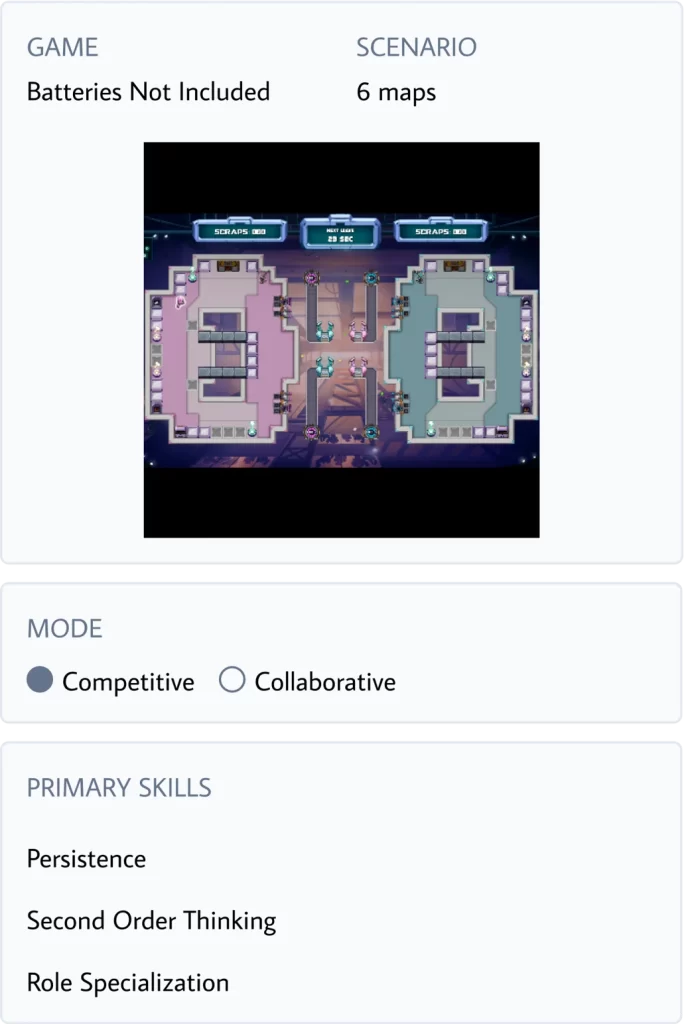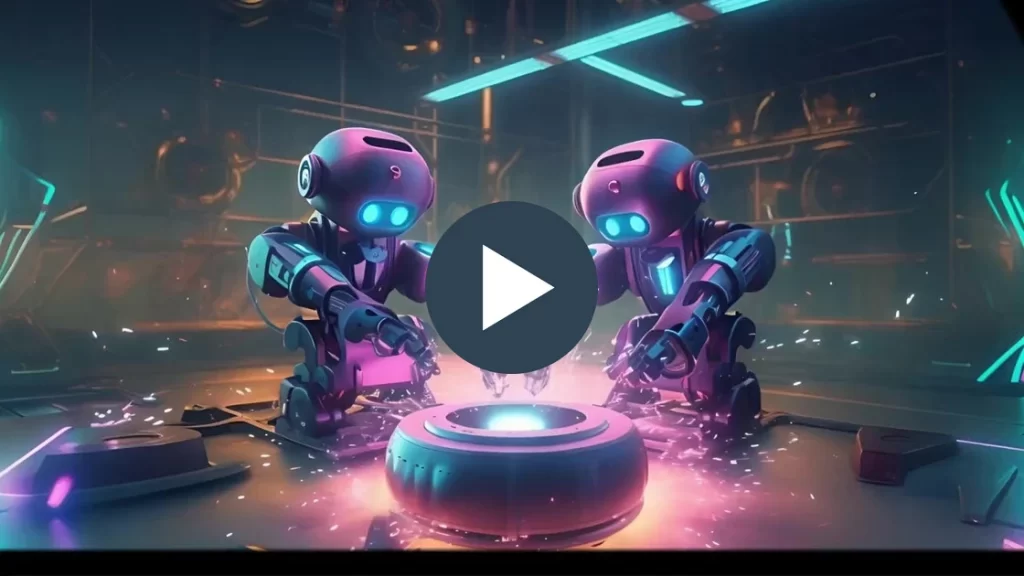Synthesis Teams | 团队:
我们正在为下周的 Synthesis-wide 综合协作活动做准备,在本周的游戏和讨论环节中练习“合作竞合”。
We’re preparing for a collaborative Synthesis-wide event next week by practicing “co-opetition” in this week’s Play and Discussion sessions.
Synthesis Tutor | 导师:
我们有一些新的Tutor课程供您的孩子享用。
We have some new Tutor lessons for your child to enjoy.
游戏 | Play
电池未含 | Batteries Not Included
详情 | Details
在生活中,有时我们必须正面竞争。有时我们需要合作。但是有时,有第三种选择。“竞合”可能是一个听起来很奇怪的词,但定义很有趣:这是指两个竞争的双方聚在一起合作以达到一个目标——这是学生们在玩“不含电池”时探索的内容。尽管场景是竞争性的,目标却是合作的:测试策略并为下周与超级计算机的合作挑战建立凝聚力。学生们将如何应对这种紧张局面?
In life, there are times we must compete head-to-head. And there are times we need to work together and collaborate. But sometimes, there’s a third option. “Co-opetition” may be a weird-sounding word, but the definition is interesting: it’s when two competing sides come together and cooperate to reach a goal — and that’s what students explore this week while playing Batteries Not Included. Although the scenarios are competitive, the goal is collaborative: test strategies and build cohesion for next week’s cooperative challenge against the Supercomputer. How will students handle this tension?

游戏:比邻星
场景:6 maps
模式:🟢竞争 ⚪合作
主要技能:
坚持
二阶思维
角色专精
GAME: Batteries Not Included
SCENARIO: 5 challenges
MODE: 🟢Competitive ⚪Collaborative
PRIMARY SKILLS:
Persistence
Second Order Thinking
Role Specialization
反思 | Post-play
以下是一些后续反思问题,如果您希望与您的孩子讨论这次经历的话。
Here are some follow-up reflection questions, in case you’d like to discuss the experience with your child.
- “电池未含”中最具挑战性的方面是什么?
What’s the most challenging aspect of Batteries Not Included? - 这周的体验感觉更具竞争性,更具合作性,还是两者均衡?
Did this week’s experience feel more competitive, more collaborative, or an even mix of the two?
任务简报 | Mission Brief

讨论 | Discussions
竞合 | Co-opetition
本周的讨论课程将通过考察现实世界领域的假设情况来加深学生对“竞合”的概念理解。两个咖啡店应该共享设备来制作竞争产品吗?两个科学实验室应该竞争治愈一种疾病,还是合并他们的团队?正如往常一样,这些难题没有正确或错误的答案。然而,这里有很多与来自世界各地的孩子进行有趣对话的机会。
This week’s Discussion session will deepen students’ conceptual understanding of “co-opetition” by examining hypothetical situations from real-world domains. Should two coffee shops share equipment to make competing products? Should two science labs compete to cure a disease, or merge their teams together? As always, there are no right or wrong answers to these conundrums. There are, however, many opportunities for interesting conversations with kids from around the world.

讨论介绍 | Discussion Intro

导师 | Tutor
新课程 | New Lesson

加法中的减法 | Adding to Subtract
在前面的减法课程中,您的学生通过将点消灭来进行减法。但是,如果你想减去比你拥有的更多的点会怎样?这时Tutor的新发明出现了:负点。通过这些有用的工具,您的学生将学习到负数以及如何将减法视为负数的加法来巩固他们对算术的理解。这个课程可以在加法和减法单元中找到。
In the previous subtraction lesson, your student was destroying dots by zapping them out of existence. But what happens if you want to subtract more dots than you have? Enter a new invention from the Tutor: Negadots (short for negative-dots). With these handy critters, your student will learn all about negative numbers and how seeing subtraction as the addition of negatives can solidify their understanding of arithmetic. This lesson can be found in the Addition and Subtraction Unit.
翻转除法 | Flipping Division
Tutor正在举办另一个点派对。这次是双重剂量的除法。在这个课程中,您的学生将构建他们对两种除法方式的理解和直觉:按一定大小分组或按一定数量分组。这听起来很复杂,因此您的学生将通过行动而非言语来学习这两种除法方式的使用。翻转除法可以在乘法和除法单元中找到。
The Tutor is throwing another dot party. And this time, it’s a double dose of division. In this lesson, your student will build their understanding and intuition around two ways of doing division: dividing into groups of a certain size or dividing into a certain number of groups. That sure is a mouthful, which is why your student will learn to use division both ways through actions, not words. Flipping Division can be found in the Multiplication and Division Unit.

